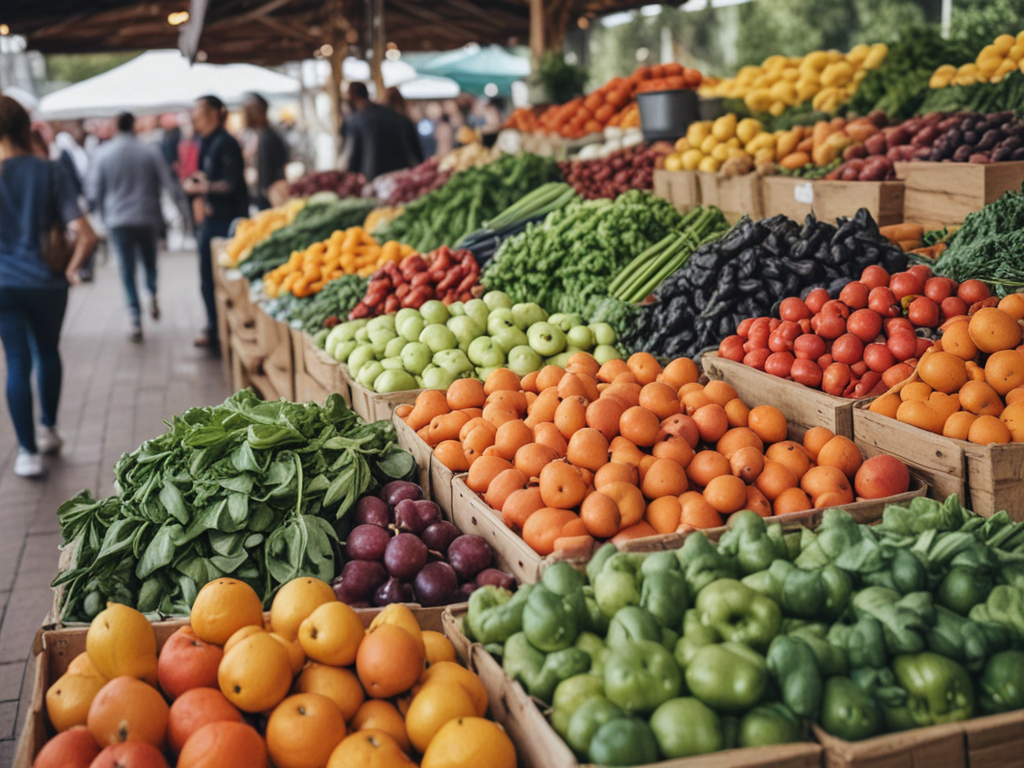
By mere coincidence, have you ever wondered why the price of your favorite foods fluctuates so frequently? The intricacies behind food pricing are multifaceted and often elusive. Understanding the complex interactions of supply and demand, production costs, market competition, and global trends is essential in exploring the enigma of food pricing. As we explore into these factors, we will uncover the underlying mechanisms shaping the prices we encounter daily, shedding light on the fascinating world of food economics.
Factors Influencing Food Prices
When examining the complex dynamics of food pricing, it becomes evident that various factors play a pivotal role in determining the cost of food items. Climate effects and sustainability are key influencers of food prices. Adverse weather conditions, such as droughts or floods, can markedly impact crop yields, leading to scarcity and higher prices. Additionally, the focus on sustainable farming practices, organic production, and fair trade can also influence the cost of food as these methods often require more resources and labor.
Government policies and regulations are equally essential in shaping food prices. Subsidies provided to farmers, import tariffs, and regulations on food safety standards all have direct implications on the final price consumers pay for food. For example, subsidies on certain crops can lead to overproduction and lower prices, while tariffs on imported goods can protect domestic producers but potentially raise prices for consumers. Moreover, regulations on labeling, packaging, and transportation can add costs that are eventually reflected in the price of food items.
Supply and Demand Dynamics
When analyzing food pricing, one must consider the intricate relationship between supply and demand. Price fluctuations in the market can be directly attributed to the delicate balance between the quantity of goods available and the consumer demand for those products. Understanding market equilibrium is essential in comprehending how prices are determined and why they fluctuate over time.
Price Fluctuations
Price fluctuations in the food industry are primarily driven by the intricate interplay between supply and demand dynamics.
- Seasonal Changes and Economic Factors: Seasonal variations in crop yields or consumer preferences, combined with economic conditions, can lead to shifts in supply and demand, affecting prices.
- Geopolitical Influences and Weather Patterns: Political events or weather disruptions in key food-producing regions can have a noteworthy impact on the availability of certain food items, influencing their prices.
- Market Speculation and Consumer Behavior: Speculation in commodity markets or changes in consumer buying habits based on factors like health trends can create fluctuations in food prices, even without notable changes in supply or demand.
Understanding these factors is important for grasping the complexities of food pricing dynamics.
Market Equilibrium
Market equilibrium in the food industry results from the intricate balance between supply and demand dynamics. This equilibrium is essential for maintaining price stability and ensuring fair competition dynamics within the market. When demand shifts, either due to changes in consumer preferences or external factors, it can impact pricing strategies adopted by food producers and retailers. Understanding these demand shifts and adjusting supply accordingly is vital for businesses to stay competitive and profitable. By analyzing market equilibrium, businesses can anticipate changes in supply and demand, optimize their pricing strategies, and make informed decisions to navigate the complexities of the food industry. Ultimately, market equilibrium serves as a cornerstone for a sustainable and efficient food pricing system that benefits both producers and consumers.
Impact of Production Costs
Labor costs greatly influence the pricing of food products, as they directly impact the overall production expenses. Supply chain expenses also play a vital role in determining the final cost of food items, affecting pricing strategies. Moreover, the integration of technology and efficient production methods can highly impact the overall production costs and consequently influence the pricing of food items.
Labor Costs Impact
In the domain of food pricing, the efficiency of production processes directly influences the overall cost structure, with labor expenses playing a significant role in determining the final price of goods. When considering the impact of labor costs on food pricing, it is important to analyze labor efficiency and wage trends.
-
Labor Efficiency: Maximizing productivity while maintaining quality standards is essential to control labor costs and optimize production processes.
-
Wage Trends: Monitoring fluctuations in wages is necessary to adapt pricing strategies accordingly and guarantee fair compensation for workers.
-
Training Programs: Investing in employee training programs can enhance labor efficiency, reduce turnover, and ultimately decrease production costs.
Supply Chain Expenses
When examining the cost structure of food production, one important factor to take into account is the impact of supply chain expenses on overall production costs. Transportation costs play a critical role in the supply chain, affecting the final price of food items. Distribution challenges, such as delays and inefficiencies, can lead to increased expenses that are eventually passed on to consumers. Additionally, packaging expenses add to the production costs, with the choice of packaging materials and design influencing the overall expenditure. Storage costs also contribute greatly to the supply chain expenses, especially for perishable goods that require specific storage conditions. Understanding and optimizing these supply chain expenses are essential for maintaining competitive pricing in the food industry.
Technology and Efficiency
Utilizing advanced technology and enhancing operational efficiency are important factors that greatly impact production costs within the food industry. Innovative farming techniques and automation benefits play significant roles in shaping the economics of food production:
-
Precision Agriculture: Implementing innovative farming techniques such as precision agriculture allows for more accurate application of resources like water, fertilizers, and pesticides, leading to cost savings and increased productivity.
-
Automated Machinery: The adoption of automation benefits food production by reducing labor costs and increasing output efficiency, ultimately lowering overall production expenses.
-
Data Analytics: Leveraging data analytics in food production operations enables better decision-making, optimizing resource allocation, and streamlining processes, resulting in cost-effective production methods.
Role of Market Competition
Examining the dynamics of market competition reveals important insights into the pricing strategies of food products. Competitive pressures drive companies to innovate in pricing strategies to gain market share and outperform rivals. Price competition is fierce in the food industry, with companies constantly adjusting their prices to attract customers and increase sales.
| Pricing Strategies | Competitive Pressures |
|---|---|
| Dynamic Pricing | Rivalry |
| Bundling | Innovation |
| Psychological Pricing | Market Share |
| Loss Leaders | Price Wars |
| Price Skimming | Differentiation |
Understanding these market dynamics is essential for consumers who benefit from competitive prices and product variety. However, it also highlights the need for businesses to stay agile and responsive to market changes to maintain a competitive edge. By analyzing these factors, companies can adapt their pricing strategies to meet consumer demands effectively. Market competition ultimately drives innovation and efficiency in the food industry, benefiting both businesses and consumers alike.
Global Market Trends
Global market trends in the food industry demonstrate a shift towards sustainable sourcing practices and increasing consumer demand for organic and ethically produced products. This shift is influenced by various factors, including trade policies, geopolitics, climate change, and sustainability. Here are three key aspects shaping these trends:
-
Trade Policies and Geopolitics: Changes in trade agreements and political dynamics between countries impact food production, distribution, and pricing globally. Trade tensions can disrupt supply chains, leading to fluctuations in food prices and availability.
-
Climate Change and Sustainability: The growing awareness of environmental issues like climate change has prompted stakeholders in the food industry to prioritize sustainable practices. Consumers are increasingly seeking products that are produced in environmentally friendly ways, leading to a rise in demand for organic and sustainably sourced food items.
-
Consumer Preferences and Ethical Production: Consumer preferences are evolving towards supporting ethical production practices. This includes considerations for fair trade, animal welfare, and social responsibility in the food supply chain. Meeting these demands requires food businesses to adapt their sourcing and production methods to align with these values.
Consumer Behavior Insights
Amidst the evolving global market trends towards sustainability and ethical sourcing in the food industry, understanding consumer behavior insights becomes paramount for businesses seeking to align with shifting preferences and values. Analyzing purchasing patterns and delving into consumer psychology are key components in deciphering the intricacies of why consumers make the choices they do.
When it comes to pricing strategies, consumer behavior insights play a crucial role. Businesses can leverage this understanding to set prices that resonate with consumers, taking into account factors such as perceived value and price sensitivity. By tapping into consumer psychology, companies can tailor their marketing efforts to appeal to specific consumer segments, ultimately driving sales and fostering brand loyalty.
Strategies for Cost-Effective Shopping
Understanding different strategies for cost-effective shopping is essential for consumers looking to make the most of their budget without compromising on quality. When it comes to maximizing the value of your grocery shopping, a few key tactics can make a significant difference:
-
Meal Planning: Planning your meals ahead of time allows you to create a shopping list based on what you need, reducing the chances of impulse buying or overspending on items you may not use. By knowing exactly what ingredients you require for your planned meals, you can shop more efficiently and avoid unnecessary purchases.
-
Bulk Buying: Purchasing items in bulk can often lead to significant cost savings per unit. Consider buying non-perishable goods, such as grains, pasta, or canned goods, in larger quantities to benefit from lower prices. Just make sure that you have adequate storage space and that you will use the items before they expire to truly maximize your savings.
-
Utilizing Discounts and Coupons: Keep an eye out for discounts, promotions, and coupons offered by stores or online platforms. These savings can add up over time, contributing to a more budget-friendly shopping experience. Be sure to check the terms and conditions to make sure you meet any requirements for using the discounts effectively.











